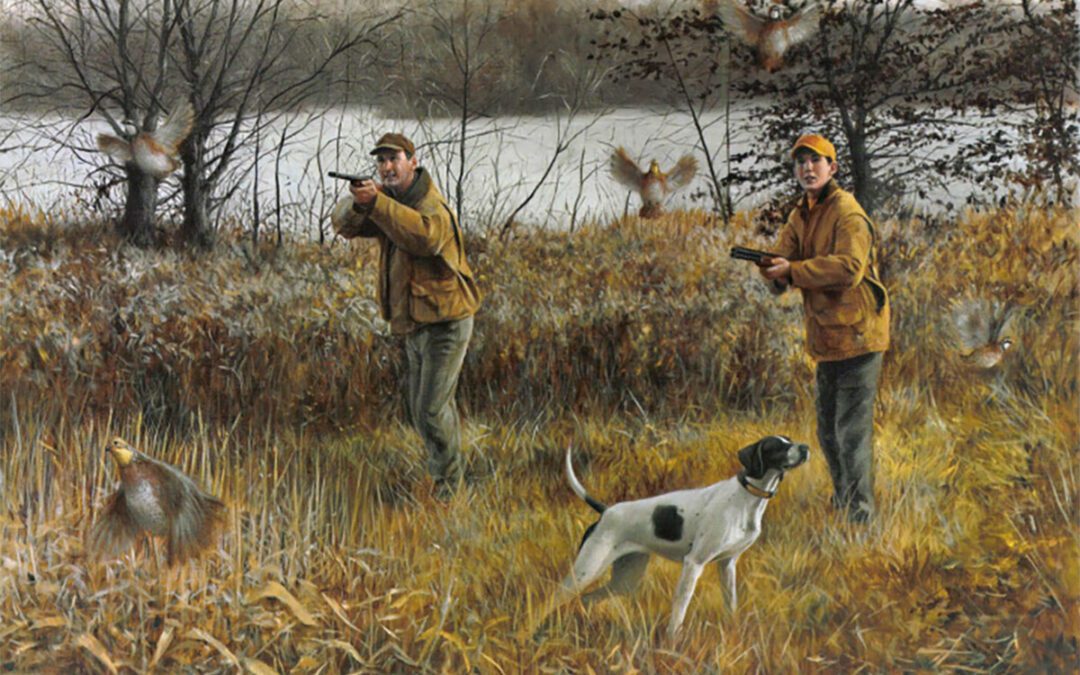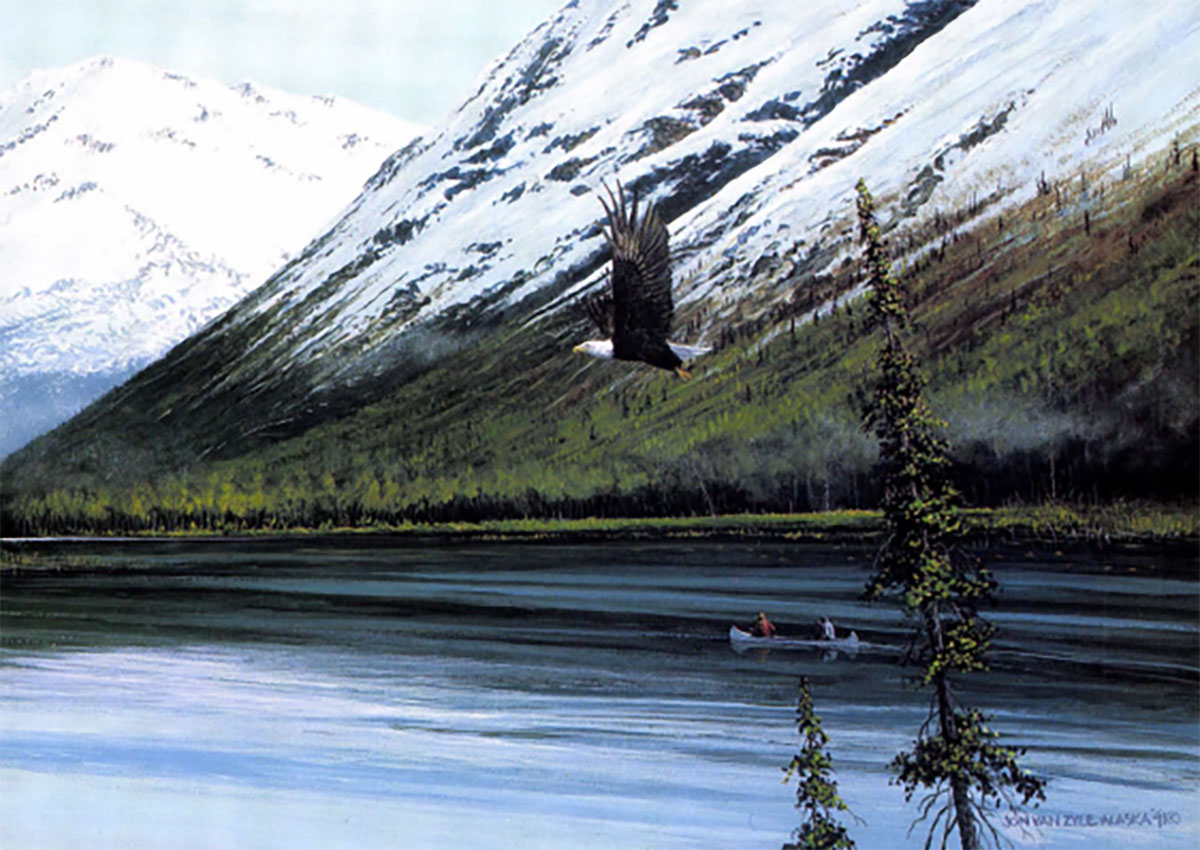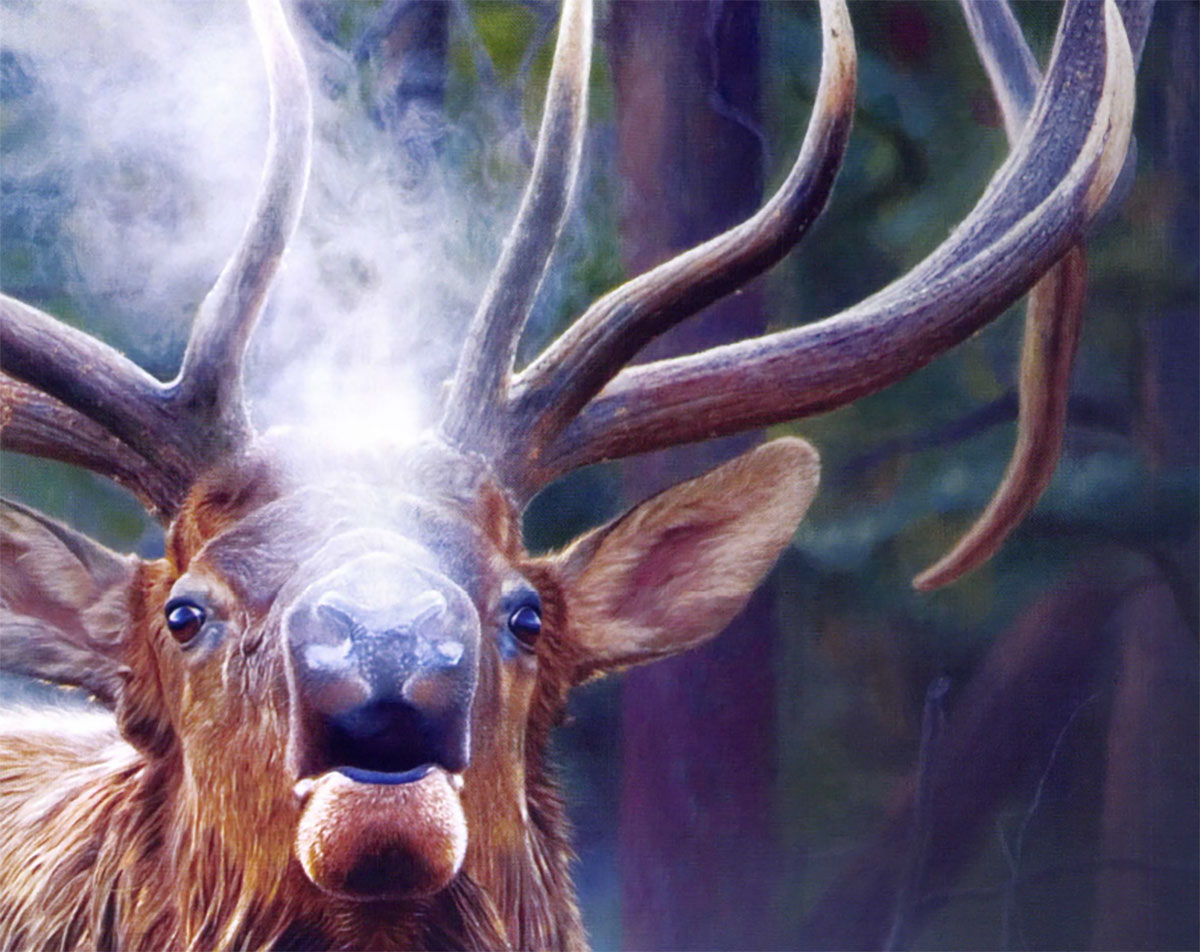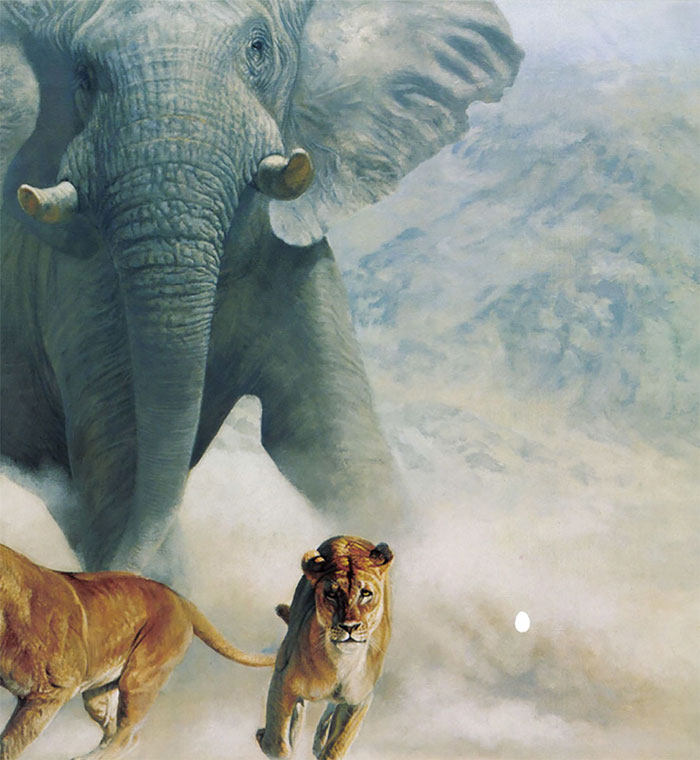Bob Bertram is somewhat of an a typical success story — a man who is surprisingly talented at more than one calling.
Bob Bertram has come a long way since cut school; he studied fine art and commercial illustration at Murray State University, class of 1984. But today he paints just what he wants to paint, in oils, in his own studio at home. Bob enjoys training his three bird dogs and hunts when and where he has the opportunity. But most importantly, his fine paintings are now appreciated by an increasing number of art enthusiasts, hunting dog owners and outdoor folks in general.
Bob’s is somewhat of an a typical success story — a man who is surprisingly talented at more than one calling. In 1986, he was hired at Zipatoni Advertising Agency in St. Louis, where he experienced a fairly rapid climb through the professional ranks.
Of course, not all art careers follow a straight line, and Bob’s was no exception. Starting out as low man at the water cooler, within three years he went from production artist to creative director.
“At that point I had turned into an idea guy,” Bob recalled. “I was well paid but hardly getting to draw or paint at all.
“As creative director, I was working on the broader conceptual level. But then I had to hand off all the juicy illustration assignments for other people to enjoy. That was extremely frustrating for me; I loved doing the art end of the projects as well, but as creative director was too busy to do illustrations.”
Fearing his job was a dead end for his overall career plans, Bob quit the agency in 1991 and went into freelance work as an illustrator and designer.
Looking back, his stubborn pursuit of illustration and later, gallery art, were probably outgrowths of his childhood pencil scribblings.
“As a little boy my mother would give me a pencil and paper, sometimes Crayons, and ask me to draw a picture for her,” he remembered. “She encouraged me and then raved about the masterpiece. I’m not sure if the pictures were any good or if she just appreciated a few moments of peace and quiet. In any event, both of my parents always encouraged me to continue developing my artistry. I don’t think I would have succeeded without this constant support.”
In the early 1980s, the computer came on scene and soon showed its ability to do more than just keeping business records and writing letters. Rather, it proved an extremely important item in the commercial artist’s toolbox.
“Computers were a big help in creating graphic design as well as pictures and then integrating the two,” Bob told me. “Some of the guys could do illustrations that looked amazingly like real paintings.”
He jumped on this popular new gadget, teaching himself the basics on a secretary’s Macintosh while she took lunch. He made it a must to learn each new application, staying ahead of the pack with his expertise.
Soon his freelance business took off aided by his understanding of the computer’s potential and his own artistic talent, he did scores of storyboards, layouts and advertising illustrations — and the money began to appear as well.
Bob was now doing the work he had wanted to do from the start and he was doing it full time.
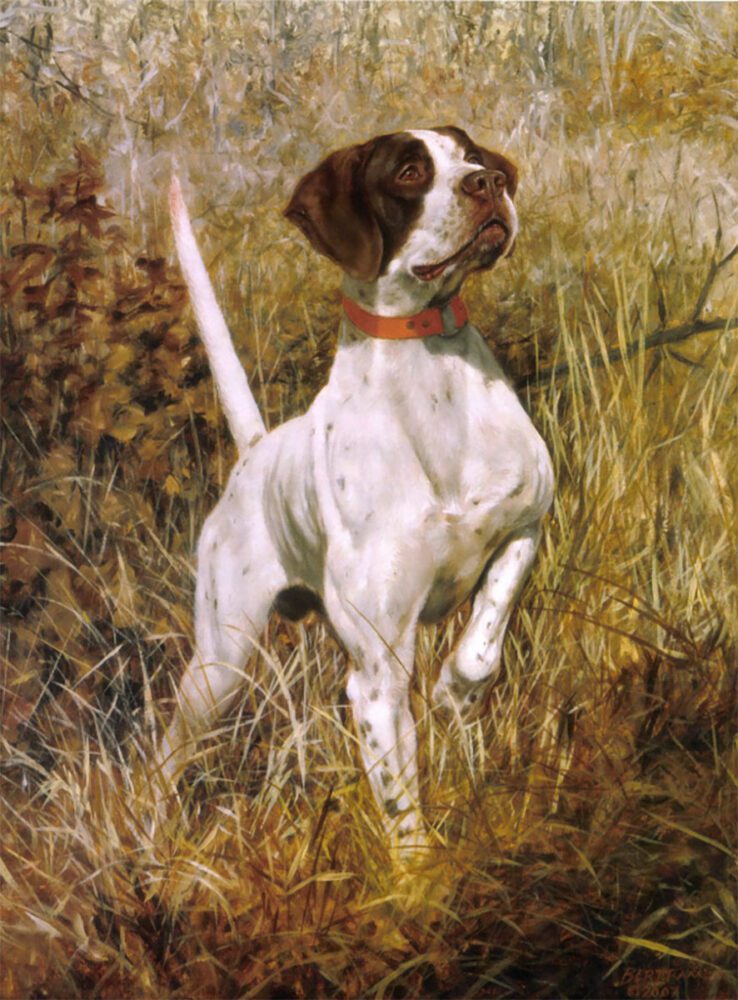
What’s Up Doc? features a stylish Elhew pointer.
“Believe me, though, it was all far from glamorous. My studio was in our basement and an important visiting client probably had his expectations shattered when he saw it. I had a computer and printer on the computer desk and the rest was piles of stuff -printouts, layouts and tear sheets everywhere. My client actually said, ‘I can’t believe your awesome work comes from here. This looks like a dumpster, not a studio!'”
Bob has strong feelings regarding computers and their use and overuse in the art world. “I blame computers for much of the decline in the art of illustration. Too much of it seems crude and less imaginative than the work I saw while growing up. They just got lazy, I believe.”
Bob mentioned a number of illustrators who would influence his art, notably friend and mentor Don Kueker, whose King Kong poster had a dramatic impact on him. “I loved the older guys,” he said, “like David Grove, Drew Struzan and calendar artist Gil Elvgren.”
Ultimately, after working freelance for some years, surviving seven-day work weeks and insane deadlines, Bob began planning the next chapter of his life’s artistic schedule. Having been successful in illustration, it occurred to him he might wish to create gallery art, as a painter, not an illustrator.
With the urging of his wife, Linda, and Don Kueker, Bob began painting pictures just for their own sake, and being an outdoorsman who loves bird dogs and hunts, he was quickly drawn to sporting art.
“My painting style is still evolving,” he said. “I strive to contrast areas of bolder and energetic brushwork with those of a calmer approach. Another thing I’ve noticed lately is that I am painting with a heavier amount of paint on my brush — perhaps a sign of confidence, let’s hope.”
Bob also began to work on personal public relations, providing his sporting art and write-ups for Pointing Dog Journal, Gun Dog Magazine, Field Trial Magazine and the Upland Almanac.
He continues to work his own dogs each day, two Gordon setters and a Boykin spaniel pup. “They are not competition dogs as yet and I am learning more from my clients in that regard. Some of them are seriously good trainers.”
Bob enjoys bird-hunting and sporting clays. Recently he was treated to some good old Southern hospitality at the famous Riverview Plantation in Camilla, Georgia, one of the Cadillacs of shooting spots in the South.
“My computer art days are now behind me. I spend my days at the easel now and not hunched over a keyboard and a pressure-sensitive digital tablet. I am finally doing what I feel I was born to do. For that I am very grateful.”
I always admire artists who somehow keep their compass set in the right direction. In an art career, it’s easy to lose one’s master plan and wander about off course. Bob Bertram , however, kept the right road in sight, ignoring the slow times and enjoying the good ones when the bills were paid by doing what he wanted to do. He is also blessed with the solid work ethic and a good sense of humor, which is almost as important as artistic talent. I have no doubt that his excellent gundog and hunting art will be continue to be enjoyed by growing numbers of admirers.
Editor’s Note: This article originally appeared in the 2009 May/June issue of Sporting Classics.
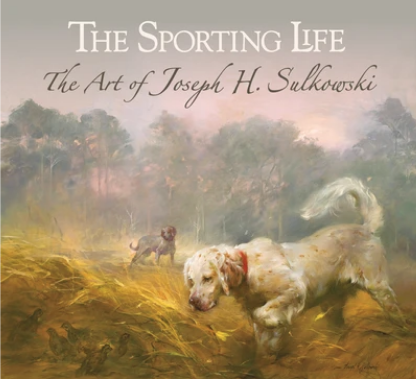 The Sporting Life is a celebration of gundogs and horses, hunting and fishing as expressed through the rich and exuberant paintings of Joseph Sulkowski. Buy Now
The Sporting Life is a celebration of gundogs and horses, hunting and fishing as expressed through the rich and exuberant paintings of Joseph Sulkowski. Buy Now

